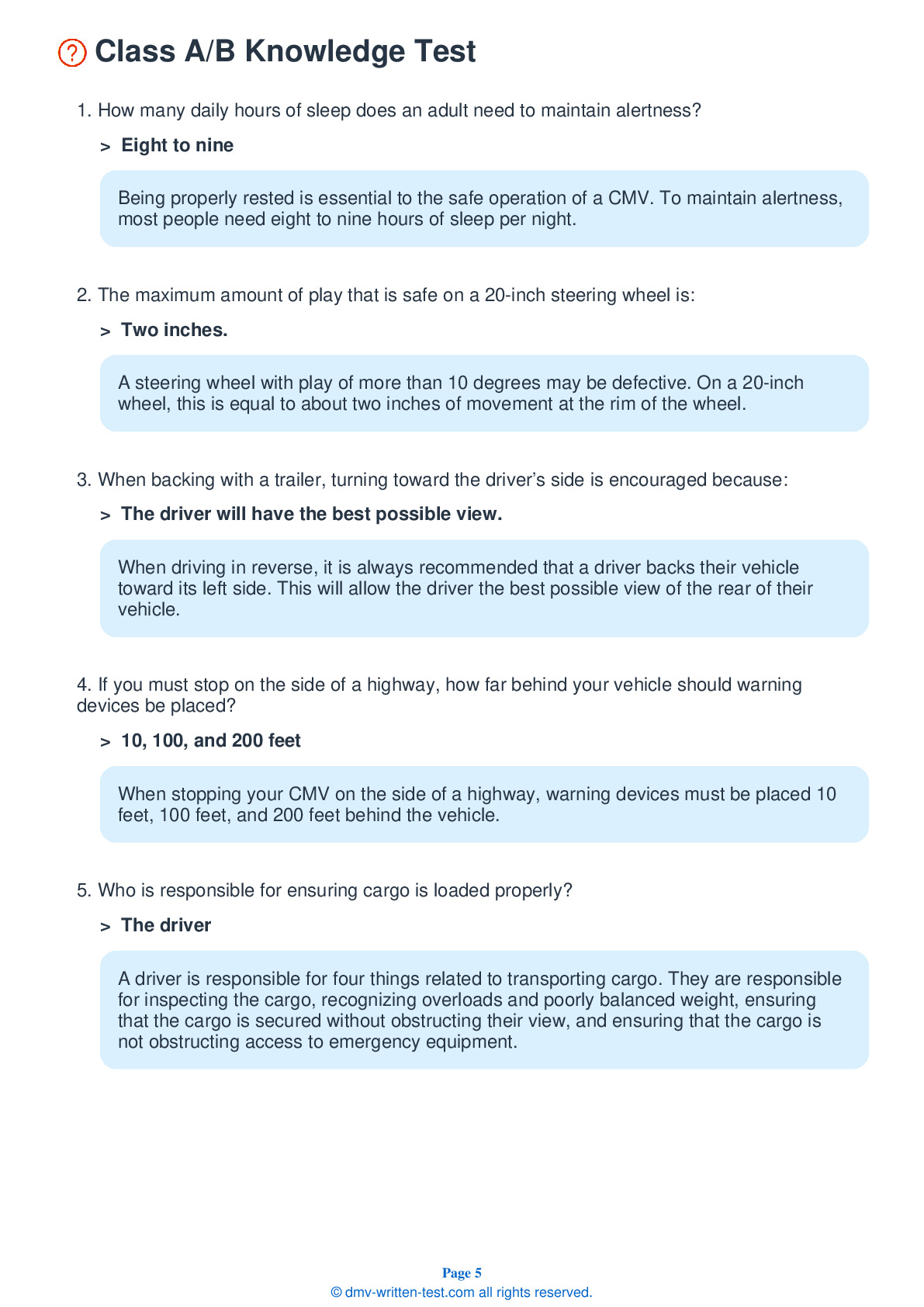Combination
All applicants who are applying for a Class A CDL should be prepared to take the Combination test. This test covers information found in Section 6 of the Commercial Driver License Manual. Section 6 provides the information needed to safely operate tractor-trailers, doubles, triples, and straight trucks with trailers. The test is made up of 20 multiple-choice questions, and applicants will need to correctly answer a minimum of 16 questions to pass. The Combination test is not a replacement for the Double/Triple endorsement test.
Number of Question
Passing Score
15. An air supply control in its "emergency" position will:
Explanation
Tractor protection controls in older vehicles may be operated by levers instead of knobs. If an air supply control is set in its "emergency" position, the air supply will be stopped and the trailer emergency brakes will be applied.
16. If the emergency air line loses pressure:
Explanation
The tractor protection valve keeps air in the trailer's braking system should the trailer break away or develop a leak. A loss of air pressure in the emergency line will cause the tractor protection valve to open and the emergency trailer brakes to activate.
17. Before beginning a trip, you should:
Explanation
Before a trip, you should ensure that air reaches all air brakes on all trailers by opening up the rear emergency line and service line shut-off valves and listening for escaping air. Close both shut-off valves before beginning to drive.
18. Rollovers happen when:
Explanation
Rollovers occur when drivers turn or change lanes too quickly.
19. Which of the following types of vehicles is most prone to the “crack-the-whip" effect?
Explanation
Double and triple combinations are the most vulnerable to turning over as a result of the "crack-the-whip" effect.
20. If a load is placed on one side of a trailer, the trailer:
Explanation




